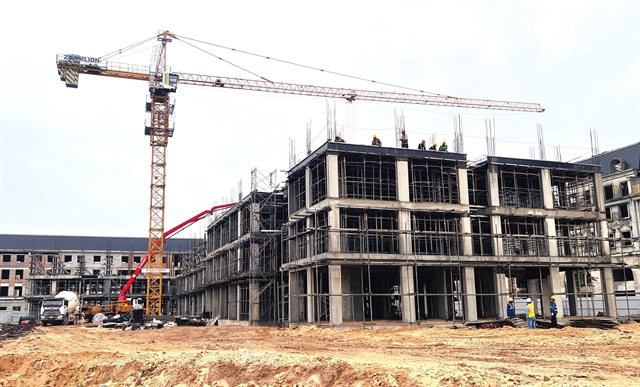 Economy
Economy

As many localities have resumed normal production and business activities, Vietnam News Agency talked to Dr. Nguyễn Thị Lan Hương, former Director of the Institute of Science, Labour and Social Affairs, about how businesses and authorities need to support workers and bring them back to work.

|
| Dr. Nguyễn Thị Lan Hương, former Director of the Institute of Science, Labour and Social Affairs |
Vietnamese businesses are facing a serious labour shortage, especially in industries such as leather and footwear, textiles and electronic component assembly, given a massive number of workers have returned home under the pandemic. Many companies find themselves struggling while rushing to complete year-end orders.
As many localities have resumed normal production and business activities, Vietnam News Agency talked to Dr. Nguyễn Thị Lan Hương, former Director of the Institute of Science, Labour and Social Affairs, about how businesses and authorities need to support workers and bring them back to work.
The unsolicited labour movement in the past months has paralysed the southern labour market, showing enterprises are still confused in coping with the pandemic. What is your opinion on this matter?
We could see that temporary closure or applying the “three-on-site” production model (working, eating and staying in the factory) is a good solution for businesses given the COVID-19 control and prevention measures.
Businesses in Bắc Ninh and Bắc Giang provinces have applied these measures very effectively. However, in HCM City and some southern provinces, these solutions seemed to be undesired. The reason was the size of employment there is very large and the cost of implementing the “three-on-site” solution is very high given the context that businesses have been exhausted after a long time of applying disease preventive measures.
Though the Government has issued many support policies for businesses, they are still not enough to help businesses retain employees.
Many businesses are facing difficulties in recruiting workers to resume production. What do you think is the main reason for this problem?
Not only Việt Nam but also in other countries businesses are facing difficulties in recruiting workers to resume production and business activities. Surveys in some countries have shown that only about one-third of workers quitting businesses want to return to work because of their anxiety about the renewed outbreak of the disease.
Vietnamese enterprises, especially in HCM City and some southern provinces, are facing a wave of labour displacement. However, the survey also showed that the majority of these displaced workers are self-employed or in small-scale production areas while most of the workers want to return to work.
Amid complicated developments of COVID-19, businesses wanting to restart production activities must comply with regulations on disease prevention and control which are also presenting barriers for them to get workers back to work.
In addition, there have been some problems in creating good quality human resources or ensuring stable living conditions for employees, so the confidence of employees has also partly declined.
Besides, the labour market in the fourth quarter is often volatile because the year-end orders are very high, so the demand for human resources in this quarter will also increase dramatically. With such reasons, it can be seen that businesses may have difficulties in recruiting workers in the near future.
What do you think businesses and Government need to do to draw workers back to work?
The Government has implemented many solutions to support businesses, such as cutting taxes, reducing costs of business obligations including paying social insurance for employees along with other measures to help businesses overcome difficulties.
These policies need to be maintained because until now, not many businesses have adequate information and can access it. An important point is that to facilitate businesses to reach these support packages, it’s necessary to alleviate the conditions and requirements that are hindering them.
As for small and medium enterprises, the ability to recovery soon is very difficult so the support policies need to focus on capital access and labour market information.
With the wave of labour migration, besides the negative impacts, there are also some positive effects and they open a new way in the use of human resources. The massive concentration of human resources in a few industrial zones or the insecurity of workers’ lives will be an opportunity to redistribute labour across the country. The return of labourers to the locality is an opportunity for local authorities to develop the local economy when receiving this human resource. — VNS




